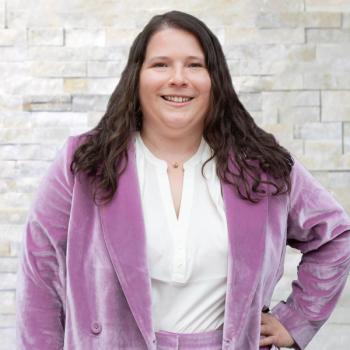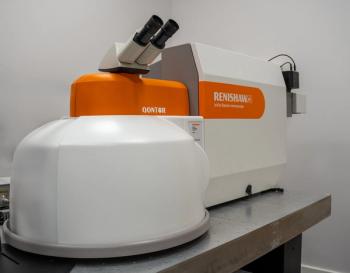
Spectroscopy Magazine Announces the 2023 Emerging Leader in Molecular Spectroscopy
Dmitry Kurouski has won the 2023 Emerging Leader in Molecular Spectroscopy Award for his molecular spectroscopy studies revolving around plants.
Dmitry Kurouski, PhD, an assistant professor of chemistry at Texas A&M, has won the 2023 Emerging Leader in Molecular Spectroscopy Award, which is presented by Spectroscopy magazine. This annual award recognizes the achievements and aspirations of a talented young molecular spectroscopist, selected by an independent scientific committee. The award will be presented to Kurouski at the SciX 2023 conference this fall, where he will be honored in an award symposium.
Kurouski’s work has focused on pioneering the development of innovative Raman spectroscopy–based sensing approaches that can be used for non-invasive, non-destructive analysis, including confirmatory diagnostics of biotic and abiotic stresses in plants. His findings demonstrate that Raman spectroscopy can be used for identification of viral, fungal, and bacterial diseases in a large number of plant species. He has also developed Raman methods for diagnostics of plant deficiencies in micro and macro element composition; his work has also demonstrated the potential for Raman spectroscopy–based phenotyping of plants.
Kurouski received his PhD in 2013 from SUNY Albany, State University of New York. During his PhD work, Kurouski developed a deeper understanding of the theory and applications of Raman spectroscopy for complex applications. This early work has led to cutting-edge optical nanoscopic approaches that are based on tip-enhanced Raman spectroscopy (TERS) and atomic force microscopy (AFM) infrared imaging. His research group now utilizes this nano-Raman-nano-IR imaging approach to reveal the structural organization of amyloid oligomers, and protein aggregates that are linked to many neurodegenerative diseases. He has also discovered that structure and toxicity of amyloid oligomers can be uniquely altered by lipids. These findings suggest that irreversible changes in lipid profiles of organs may be the underlying biophysical cause that triggers formation of toxic protein species that in turn are responsible for the onset and progression of amyloidogenic-type diseases. He was recently awarded by a highly prestigious $1M MIRA award from the National Institute of Health (NIH) to investigate the effect of lipids on the structure and toxicity of amyloid oligomers.
Kurouski and his research group have made significant progress in the understanding of the physics of hot carriers and plasmon-driven catalysis on mono- and bimetallic nanostructures. These findings discovered by his group have allowed for elucidation of the underlying physical cause of unique reactivity and selectivity in plasmon-driven catalysis on gold-platinum and gold-palladium bimetallic nanostructures.
Kurouski's group developed and deployed Raman spectroscopy for diagnostics of structural and metabolic changes in plants that can be used for confirmatory detection and identification of abiotic stress. The researchers developed spectroscopic libraries that, together with a hand-held Raman spectrometer, could be used to detect and identify nitrogen, phosphorus, and potassium deficiencies in rice. It was also demonstrated that Raman spectroscopy can be used for pre-symptomatic diagnostics of medium and high salinity stress in plants. Together with more than 40 research reports on this topic, this work showed the emerging potential of Raman spectroscopy in agriculture. These findings are summarized in an excellent review published by the Kurouski group last year.
Kurouski and his research team also have used nano-Raman-nano-IR imaging approaches to unravel the structural organization of viruses. Kurouski found that TERS was capable of resolving protein secondary structure, charge profile, and amino acid composition of the viral capsid with sub-nanometer spatial resolution. At the same time, AFM-IR allowed for the elucidation of structural organization of the nucleic acids in viruses. This work demonstrated the complementary measurements of AFM-IR and TERS in probing depth and chemical information for challenging applications. The researchers also developed a confirmatory approach for highly accurate identification of viruses. They have shown that only one viral particle is required for such diagnostics, whereas the reported accuracy of this innovative approach was 100%. This viral diagnostic approach has the potential to accelerate diagnostics of viral particles for a more rapid clinical response. Kurouski has published a comprehensive review article that discusses the advantages of using AFM-IR-TERS imaging.
Kurouski has published 140 papers with more than 4000 citations and has given 163 oral presentations at scientific conferences. He is also a reviewer for multiple journals including Journal of the American Chemical Society, Nature Materials, Journal of Physical Chemistry, Frontiers in Plant Sciences, Analyst, and others.
Kurouski has also won several honors and awards. In 2022, he received the Dean's Outstanding Achievement Award in Excellence in Early Career research; in 2021 he was given the Vice Chancellor’s Award in Excellence in Early Career research; and in 2014 he received the Best Junior Researcher Award at the International Conference on Raman Spectroscopy (ICORS 2014).
For information about how to nominate a candidate for the 2024 award, please see the
Newsletter
Get essential updates on the latest spectroscopy technologies, regulatory standards, and best practices—subscribe today to Spectroscopy.



